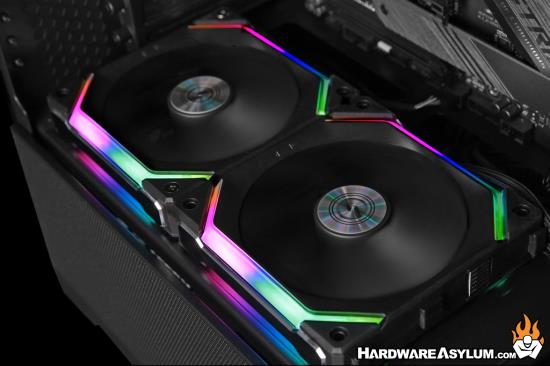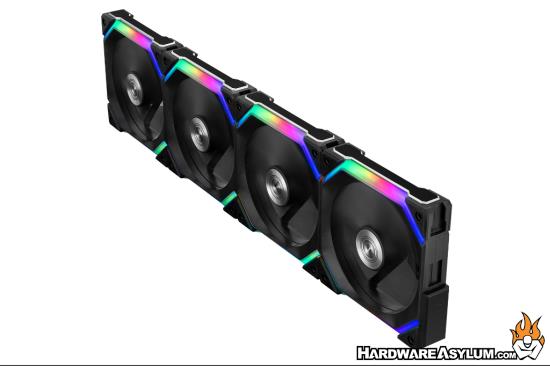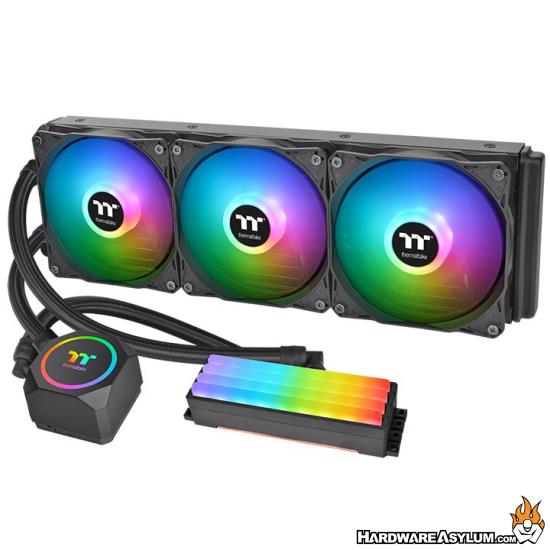Tech News
-
Crucial P5 NVMe M.2 SSD Review Round Up
It has been awhile since I have posted one of these so, go easy on me.
In April 2020 Crucial announced a new line of performance SSDs that expanded on the P1 line of NVMe drives. A total of two drives were announced and I was able to review the Crucial P2 NVMe drive in May, as that was the first one to be released.
Sadly the drive was "slow" but my particular drive was considerably faster due to the components used. Seems the P2 was a product designed to handle a variety of different NAND configurations. I'm not sure if P5 will follow this model but it seems pretty good out of the gate.

Web Reviews
Crucial P5 1TB PCIe M.2 2280 SSD Review @ Madshrimps.be
Funky Kit Review - Crucial P5 500GB M.2 NVMe SSD
Crucial P5 1TB PCIe M.2 SSD Review @ CDRLabs.com
Crucial P5 1 TB M.2 NVMe SSD @ TechPowerUp
Crucial P2 & P5 Review @ Vortez -
rucial Ballistix DDR4 2x32GB 3600MHz BL2K32G36C16U4B @ LanOC Reviews
Gotta say it is nice to see memory reviews hitting the Internet again. Quite a few companies including Corsair, GSKill and Kingston are extremely reserved when it comes to sending samples making it difficult to find good information on them. I suspect this is a factor of margins and the company insistence that memory doesn't need to be reviewed.
I'd like to offer another option which is the reluctance of Tier 1 review sites flat out refusing to review memory. This has a trickle down effect for smaller sites since it tends to shrink the marketing budget. I will be honest in saying that reviewing memory is kinda boring, the articles are not very popular and few people (reviewers included) actually understand that makes memory special.
In this review from LanOC we can get a sample of the new Crucial Ballistix 3600Mhz modules featuring a new heatspreader design and a really impressive CAS 16 timing set.
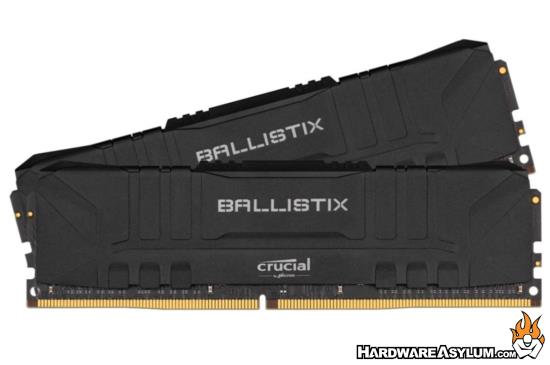
I’ve had the chance over the years to check out a wide variety of Crucial Ballistix branded memory. Being a part of Micron, they have always been priced well, and as far as memory goes been solid. Styling-wise I loved the old Ballistix designs and there are a few of the modern designs like the Elite and their Tactical Tracer RGB kits that I was able to 3D print and CNC carve custom designs for. But as a whole, their mainstream stuff, while not bad looking has looked dated for a while now. So back at the start of the year, they announced new memory kits with new heatspreaders and I was excited to see what Crucial had going on. It took a while to come in, but I recently finally had the Crucial Ballistix BL2K32G36C16U4B kit come in which is their 2x32GB dual channel kit running at 3600 MHz. The timing couldn’t be much better given my personal PC has been begging for more memory with Microsoft Flight Sim 2020 and chrome having full-on MMA fights for the memory. So today I’m going to check out the new design and see how this kit performs.
Call me crazy but, I'm not a fan of the new heatspreader design. I got to see it in person during CES and it simply doesn't seem to have enough style to set it apart in the market. But, Crucial seems to like it and will likely change the design again in a couple years. If they are looking to reclaim the top spot in the retail memory market they are going to have to settle down.
-
Introducing the EVGA GeForce RTX 30 Series Graphics Cards
The Definition of Ultimate Performance
Announcing EVGA GeForce RTX 30 Series Powered by the NVIDIA Ampere architecture
An undeniable force is here. The planets align as the next evolution of the ultimate gaming experience has emerged. The EVGA GeForce RTX™ 30 Series Graphics Cards have arrived. These new cards are colossally powerful in every way, giving you a whole new tier of performance. They are powered by the NVIDIA® Ampere architecture, which doubles down on ray tracing and AI performance with enhanced RT Cores, Tensor Cores, and new streaming multiprocessors. The EVGA GeForce RTX 30 Series are the absolute definition of ultimate performance.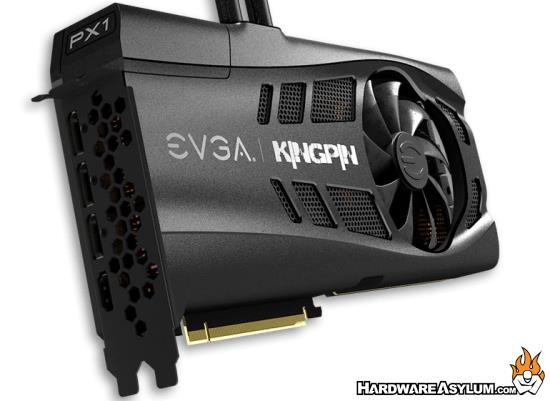
The new NVIDIA GeForce RTX 30 Series GPUs, the 2nd generation of RTX, features new RT Cores, Tensor Cores and streaming multiprocessors, bringing stunning visuals, amazingly fast frame rates, and AI acceleration to games and creative applications. Powered by the NVIDIA Ampere architecture, which delivers increases of up to 1.9X performance-per-watt over the previous generation, the RTX 30 Series effortlessly powers graphics experiences at all resolutions, even up to 8K at the top end. The GeForce RTX 3090, 3080, and 3070 represent the greatest GPU generational leap in the history of NVIDIA.
EVGA GeForce RTX 3090
The EVGA GeForce RTX 3090 is colossally powerful in every way imaginable, giving you a whole new tier of performance at 8K resolution. It's powered by the NVIDIA Ampere architecture, which doubles down on ray tracing and AI performance with enhanced RT Cores, Tensor Cores, and new streaming multiprocessors. Combined with the next generation of design, cooling, and overclocking with EVGA Precision X1, the EVGA GeForce RTX 3090 Series redefines the definition of ultimate performance.
EVGA GeForce RTX 3080
The EVGA GeForce RTX 3080 delivers the unprecedented performance that gamers crave for 4K resolution gaming, powered by the NVIDIA Ampere architecture. It's built with enhanced RT Cores and Tensor Cores, new streaming multiprocessors, and superfast G6X memory for an amazing gaming experience. Combined with the next generation of design, cooling, and overclocking with EVGA Precision X1, the EVGA GeForce RTX 3080 Series presents a new definition in ultimate performance.
EVGA GeForce RTX 3070
The EVGA GeForce RTX 3070 is powered by the NVIDIA Ampere architecture. Built with enhanced RT Cores and Tensor Cores, new streaming multiprocessors, and high-speed G6 memory, it gives you the power you need to rip through the most demanding games at 1440p resolution. Combined with the next generation of design, cooling, and overclocking with EVGA Precision X1, the EVGA GeForce RTX 3070 Series creates a definition for ultimate performance.
EVGA iCX3 Cooling Technology- Micro-thin Heatpipes - Built in Micro-thin Heatpipes on the EVGA GeForce RTX 3090 backplate adds additional heat transfer from the memory backside.
- Air-Through PCB - Carefully placed cut-outs in the PCB and backplate improve airflow and decrease exhaust recovery.
- Unified Copper Block for GPU and Memory - A unified copper block which EVGA has previously used on the HYBRID cooler solution and is proven to lower both GPU and memory temperatures.
- Through-Hole Heatsink Fins - The EVGA iCX3 heatsink features many L-shaped fins with hundreds of through-holes to allow cool air to run through the entire heatsink evenly and quietly.
- HDB 2.0 0dB Noise Motor Fan - 2nd Gen HDB fan on EVGA graphics card features an optimized HDB active motor for silent 0dB mode, asynchronous fan mode, and a special upraised “E” pattern that further reduces turbulent noise.
- ARGB GeForce RTX 30 Series LED - Vibrant, customizable range of color and brightness to light up your system. A next-level sputter coating yields a smooth silver texture on the panel with low-level LED lighting.
- Asymmetry Fan Arrangement and Design - Asymmetry fan layout to allow the airflow to cover nearly the entire heatsink increasing airflow for better heat dissipation.
Built for EVGA Precision X1
Built for NVIDIA GeForce RTX, EVGA Precision X1 is the next generation overclocking software to maximize and control your EVGA graphics card. With the new EVGA Precision for Game Bar widget, you can get instant access to monitoring and overclocking built right into Windows Game Bar. Want to overclock and monitor without even exiting your game? It’s all here.
DXR (DirectX Ray Tracing)
DirectX Ray Tracing allows games to simulate how light works in real life, providing incredibly realistic and beautiful graphic effects like global illumination, reflections, and shadows. GeForce RTX GPUs were designed from the start for the demands of ray tracking workloads. Specialized RT cores, found only on GeForce RTX graphics cards, provide billions of rays per second of performance, and up to 3X the frame rate with DXR games and applications. This makes ray tracing at real-time frame rates possible for the first time.
DirectX 12 Ultimate
DirectX is an API that enables developers to add amazing graphics effects to Microsoft Windows-based PC games. DirectX 12 Ultimate is the newest version of the API and new gold standard for the next-generation of games. DX12 Ultimate takes games to a whole new level of realism with support for ray tracing, mesh shaders, variable rate shading, and sampler feedback. GeForce RTX is the first and only PC platform with support for these game-changing features.
To learn more about EVGA GeForce RTX 30 Series graphics cards, please visit https://www.evga.com/articles/01434. -
Get Amplified with ZOTAC Gaming GeForce RTX 30 Series
HONG KONG – September 2, 2020 – ZOTAC Technology Limited, a global manufacturer of innovation, is proud to announce the advent of the all-new ZOTAC GAMING GeForce RTX™ 30 Series GPUs based on the NVIDIA Ampere architecture. Integrated with next-generation technologies, enhanced RT Cores and Tensor Cores, new streaming multiprocessors and superfast memory, the ZOTAC GAMING GPUs give rise to amplified gaming with ultra-graphics fidelity.
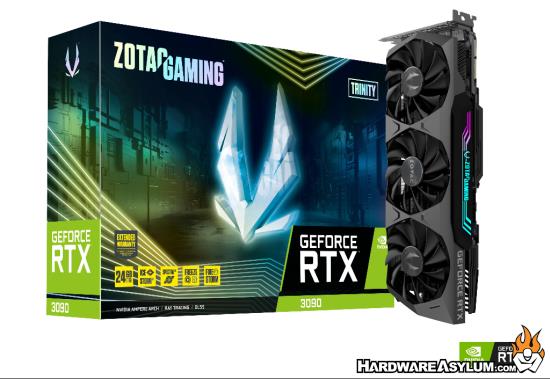
The new NVIDIA GeForce RTX 30 Series GPUs, the 2nd generation of RTX, features new RT Cores, Tensor Cores and streaming multiprocessors, bringing stunning visuals, amazingly fast frame rates, and AI acceleration to games and creative applications. Powered by the NVIDIA Ampere architecture, which delivers increases of up to 1.9X performance-per-watt over the previous generation, the RTX 30 Series effortlessly powers graphics experiences at all resolutions, even up to 8K at the top end. The GeForce RTX 3090, 3080, and 3070 represent the greatest GPU generational leap in the history of NVIDIA.
The Fastest GPU For Gaming
The ZOTAC GAMING GeForce RTX 30 Series introduces a fresh design with flourishes that exert motion in stillness and advancements in cooling.
"The GeForce RTX 30 Series based on the NVIDIA Ampere architecture is a marvel of engineering," said Tony Wong, Chief Executive Officer of ZOTAC. "We move forward introducing refinements on the component level, restraint on external hardware design, and advancements in cooling to bring out the best of each GPU.""We look forward to ZOTAC’s engineering prowess and forward-thinking hardware design in pushing the most advanced GPU architecture even further," said Matt Wuebbling, vice president of global GeForce marketing at NVIDIA.
AMP Extreme – Top Tier
Always a PC gamer’s favorite with its prominent design and absolute performance, the all-new AMP Extreme design introduces HoloBlack, a unique design embracing an aurora-like holographic finish that exerts motion in stillness. The flourish shifts in color depending on the angle of view with a transparency that is only visible when the SPECTRA 2.0 RGB lighting glows underneath.The design language to unify both front and back continues with the inclusion of a wraparound backplate with the addition of ARGB lighting. A new 3-pin RGB header feature enables the connection of an external RGB LED strip to sync with the graphics card lighting.
While the metal die-cast frontplate and backplate ensure all-around physical durability, AMP Extreme also features POWERBOOST, a high temperature resistant chip that enables continued longevity and stronger performance.Trinity and Twin Edge Debut
The ZOTAC GAMING GeForce RTX 30 Series features Trinity and Twin Edge, the triple fan and dual fan models. Both Trinity, Twin Edge and AMP Extreme come equipped with a more refined IceStorm 2.0 cooling system.The powerful cooler introduces advancements under the hood and is purpose-built for wider coverage to keep the GPU cooler and running stronger. The new 11-blade fan increases airflow by up to 10% when compared to our previous generation design while adjustments to the heatsink design, improved heat pipe layout, and wider coverage contribute to better overall performance. The FREEZE fan stop feature has
also been expanded to be available on more models than before.Take advantage of the ZOTAC GAMING FireStorm Utility to fine-tune your graphics card, monitor your GPU, adjust the fan speed with Active Fan Control featured models, customize the RGB lighting, and more.
Availability
Trinity Models of the ZOTAC GAMING GeForce RTX 30 Series are available starting in the 2nd half of September 2020, while AMP Extreme and Twin Edge models are expected to be available in October 2020. -
World’s Fastest Discrete Graphics Memory From Micron Powers NVIDIA’s Breakthrough Gaming Speeds
Micron GDDR6X accelerates photorealistic 3D experiences at 1 terabyte per second, rates once thought impossible
BOISE, Idaho, Sept. 01, 2020 (GLOBE NEWSWIRE) -- Micron Technology, Inc. (Nasdaq: MU), today announced the world’s fastest discrete graphics memory solution, GDDR6X, the first to power system bandwidth up to 1 terabyte per second (TB/s). Working with visual computing technology leader NVIDIA, Micron debuted GDDR6X in the new NVIDIA® GeForce RTX™ 3090 and GeForce RTX 3080 graphics processing units (GPUs), which are tailored to support the fast speeds that immersive, high-performance gaming applications demand.
“Our multilevel signaling innovation in GDDR6X has shattered conventional bandwidth limits, clocking record-breaking speeds,” said Tom Eby, senior vice president and general manager of the Compute & Networking Business Unit at Micron. “Unlike traditional memory, GDDR6X has unparalleled data rates that can keep pace with gaming innovation and data-hungry applications — setting a new standard for graphics memory.”
Micron’s GDDR6X serves as a powerful enabler of NVIDIA GeForce RTX 3090 and GeForce RTX 3080 graphics cards’ performance. Building on its most recent collaboration with NVIDIA for the GeForce RTX graphics card (enabled by GDDR6), Micron transforms the memory/GPU interface with GDDR6X, accelerating performance on complex graphics workloads across next-generation gaming applications.
“With the unprecedented speed of GDDR6X, Micron has delivered tomorrow’s memory technology today, and it’s at the heart of NVIDIA GeForce RTX 3090 and 3080 GPUs — helping us deliver rich, realistic, cinematic user experiences,” said Jeff Fisher, senior vice president of the GPU Business Unit at NVIDIA. “Building on a history of collaboration that started with GDDR5, we’re thrilled to have reinvented the memory/GPU interface with Micron, setting a new bar for high-performance, high-resolution gaming.”
As PC gaming evolves in sophistication, gamers today demand the highest performance for their advanced graphics cards — a requisite for smooth animation, sharp visuals, 8K resolution and real-time ray tracing, a rendering technique that results in realistic light reflections and cinematic effects. GDDR6X’s groundbreaking speed offers discerning gamers high-resolution experiences with maximum frame rates and instant rendering, allowing users to experience highly realistic and reactive effects without jarring lags. Combined with NVIDIA’s GeForce RTX 3090 and GeForce RTX 3080 GPUs, GDDR6X’s ultra-bandwidth capabilities improve real-time ray tracing and neural graphics processing to create photorealistic and immersive virtual worlds in PC games.
The new NVIDIA GeForce RTX 30 Series GPUs — the second generation of the NVIDIA RTX PC gaming platform — feature new ray tracing cores, Tensor Cores and streaming multiprocessors. The results are stunning visuals, amazingly fast frame rates and artificial intelligence acceleration for games and creative applications. Powered by the NVIDIA Ampere architecture, which delivers increases of up to 1.9 times performance-per-watt over the previous generation, the RTX 30 Series effortlessly powers graphics experiences at all resolutions, even up to 8K. The series represents the greatest GPU generational leap in NVIDIA’s history.
Beyond the Binary: First to Implement PAM4 in Memory, Micron Sets New Benchmark
Micron achieved GDDR6X’s breakthrough bandwidth by applying innovative signal transmission technology, four-level pulse amplitude modulation (PAM4), to revolutionize how memory moves data. Since 2006, Micron’s engineers and researchers have explored applying multilevel signaling to the memory interface. Over 45 patents later, Micron is the first in the industry to implement PAM4 in memory, creating a new benchmark for future generations of graphics memory.
By using PAM4 multilevel signaling techniques, GDDR6X transfers data much faster, doubling the input/output (I/O) data rate. Until now, graphics memory was capped at 64 gigabytes per second (GB/s), transmitting one bit per cycle through the traditional binary standard, which relies on two signal levels to transmit data encoded as 1s or 0s. Instead, Micron’s novel PAM4 technique employs four distinct levels to transmit two bits of data to and from the memory at a time. As a result, Micron’s GDDR6X dramatically increases memory bandwidth to 84 GB/s for each component, translating to system bandwidth of up to 1 TB/s — rates once thought impossible.
Micron’s GDDR6X is also the only memory device using PAM4 that can be designed and built in mass production volumes, bringing cutting-edge I/O research to market. With its board design and packaging carefully fine-tuned for simplicity by Micron’s graphics memory experts, GDDR6X offers customers easy implementation and less manufacturing complexity than other high-bandwidth solutions on the market. Notably, GDDR6X doubles the data rate in a channel without doubling the required operating frequency, creating a smooth, real-time experience for gamers.
In addition, GDDR6X delivers lower power per transaction (pJ/bit) than previous generations, making it ideal for energy-sapping workloads like gaming and other high-bandwidth graphics applications, which demand both lightning fast and low-power memory. GDDR6X also features the ability to scale power down or up, allowing users to dial back performance to save energy.
Availability
The GeForce RTX 3080 is available for purchase starting Sept. 17, and the GeForce RTX 3090 is available starting Sept. 24 on NVIDIA’s website. Both will be available as custom boards, including stock-clocked and factory-overclocked models from top add-in card providers and in gaming systems from leading OEMs and system builders.GDDR6X is now available as part of Micron’s new Ultra-Bandwidth Solutions portfolio. Micron delivers GDDR6X memory in 8 gigabits (Gb) density, with speeds of 19 to 21 Gb/s. Starting in 2021, 16Gb density units will be added. Partners and customers interested in exploring GDDR6X for their high-performance solutions — whether for gaming, artificial intelligence inference or professional visualization — can find out more here.
Resources
- NVIDIA press release: NVIDIA Delivers Greatest Ever Generational Leap in Performance With GeForce RTX 30 Series GPUs
- NVIDIA announcement replay: GeForce Special Event Replay with NVIDIA CEO Jensen Huang
- NVIDIA GeForce feature story: Introducing the RTX 30 Series Graphics Cards
- Micron blog: GDDR6X: Memory Reimagined
- Micron infographic: GDDR6X Infographic
- Micron video: GDDR6X: Bringing Gaming and AI to Life
- Micron video: Feeding the Beast: the Making of GDDR6X
- Micron technical brief: Doubling I/O Performance with PAM4
- Micron technical brief: The Demand for Ultra-Bandwidth Solutions
-
NVIDIA Delivers Greatest-Ever Generational Leap with GeForce RTX 30 Series GPUs
SANTA CLARA, Calif., Sept. 01, 2020 (GLOBE NEWSWIRE) -- NVIDIA today unveiled its GeForce RTX™ 30 Series GPUs, powered by the NVIDIA Ampere architecture, which delivers the greatest-ever generational leap in GeForce® history.
Smashing performance records, the GeForce RTX 3090, 3080 and 3070 GPUs offer up to 2x the performance and 1.9x the power efficiency over the previous Turing-based generation. The GPUs take advantage of the second generation of NVIDIA RTX™ — the world’s most powerful PC gaming platform — to provide unprecedented levels of real-time ray tracing and AI gaming.
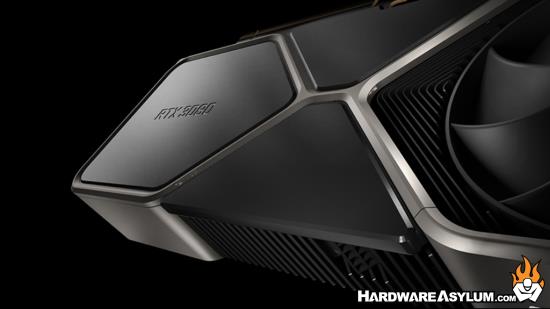
The RTX 30 Series was unveiled during a virtual launch event by NVIDIA founder and CEO Jensen Huang, who also announced that Fortnite, the pop culture gaming phenomenon, is turning on RTX real-time ray tracing, adding four ray-traced features for a more immersive gaming experience, including reflections, shadows, global illumination and ambient occlusion.
Huang additionally revealed powerful new tools for gamers, including NVIDIA Reflex, which makes competitive gamers quicker; NVIDIA Omniverse Machinima, for video game storytelling using real-time computer graphics engines; and NVIDIA Broadcast, which harnesses AI to turn any room into a home broadcast studio.
“Today’s launch of NVIDIA Ampere GPUs is a giant step into the future,” said Huang. “The work of thousands of engineering years, the GeForce RTX 30 Series delivers our greatest generational leap ever. NVIDIA RTX fuses programmable shading, ray tracing and AI for developers to create entirely new worlds. Twenty years from now, we’ll look back and realize that the future of gaming started here.”
Marvels of NVIDIA Ampere Architecture - 2nd Generation RTX
Enabling the blistering performance of the new RTX 30 Series GPUs and the NVIDIA Ampere architecture are cutting-edge technologies and over two decades of graphics R&D, including:- New streaming multiprocessors: The building block for the world’s fastest, most efficient GPU, delivering 2x the FP32 throughput of the previous generation, and 30 Shader-TFLOPS of processing power.
- Second-gen RT Cores: New dedicated RT Cores deliver 2x the throughput of the previous generation, plus concurrent ray tracing and shading and compute, with 58 RT-TFLOPS of processing power.
- Third-gen Tensor Cores: New dedicated Tensor Cores, with up to 2x the throughput of the previous generation, making it faster and more efficient to run AI-powered technologies, like NVIDIA DLSS, and 238 Tensor-TFLOPS of processing power.
- NVIDIA RTX IO: Enables rapid GPU-based loading and game asset decompression, accelerating input/output performance by up to 100x compared with hard drives and traditional storage APIs. In conjunction with Microsoft’s new DirectStorage for Windows API,(1) RTX IO offloads dozens of CPU cores’ worth of work to the RTX GPU, improving frame rates and enabling near-instantaneous game loading.
- World’s fastest graphics memory: NVIDIA has worked with Micron to create the world’s fastest discrete graphics memory for the RTX 30 Series, GDDR6X.(2) It provides data speeds of close to 1TB/s system memory bandwidth for graphics card applications, maximizing game and app performance.
- Next-gen process technology: New 8N NVIDIA custom process from Samsung, which allows for higher transistor density and more efficiency.
RTX Comes to Fortnite, Call of Duty: Black Ops Cold War
Pop culture phenomenon Fortnite is the latest blockbuster game to turn RTX On, joining Call of Duty: Black Ops Cold War and a large group of AAA titles, such as Cyberpunk 2077, Dying Light 2 and Watch Dogs: Legion.Among other titles already shipping with ray-tracing support are Control, Minecraft with RTX Beta for Windows 10 and Wolfenstein: Youngblood. Additionally, ray tracing is supported in industry-standard APIs, including Microsoft DirectX Raytracing and Vulkan, as well as in the game engines used by developers to create games, including Unreal Engine, Unity, Frostbite, id Tech, Northlight, Luminous Engine, 4A Engine and more.
DLSS: AI-Powered Gaming Acceleration
NVIDIA DLSS, one of the biggest graphics breakthroughs of the past decade, uses the deep learning neural network powered by RTX Tensor Cores. When enabled, DLSS — which is supported exclusively on GeForce RTX GPUs — improves performance in titles such as Control, Minecraft with RTX for Windows 10 and Death Stranding, while generating images that are comparable to native resolution. DLSS will be heading to Boundary, Bright Memory Infinite, Call of Duty: Black Ops Cold War, Cyberpunk 2077, Fortnite, Ready or Not, Scavengers and Watch Dogs: Legion. For those with more powerful PC configurations, a new Ultra Performance mode enables DLSS to run up to 8K.New Ways to Play
NVIDIA also announced three new technologies designed for enhancing the experiences of gamers, broadcasters, esports professionals and creators:- NVIDIA Reflex: Become Instantly More Competitive. Gamers strive for the lowest possible latency in competitive games because it allows the PC to respond faster to their inputs, enabling them to play with greater precision. NVIDIA Reflex is a new suite of technologies that optimize and measure system latency. Among these are NVIDIA Reflex Low-Latency Mode, a technology being integrated into popular esports games such as Apex Legends, Call of Duty: Warzone, Fortnite and Valorant that reduces latency by up to 50 percent, and NVIDIA Reflex Latency Analyzer, which detects input coming from the mouse and then measures the time it takes for the resulting pixels (for example, a gun muzzle flash) to change on screen. Reflex Latency Analyzer is integrated into new 360Hz NVIDIA G-SYNC® Esports displays arriving this fall from Acer, Alienware, ASUS and MSI and supported by top esports peripherals from ASUS, Logitech, Razer and SteelSeries. Measuring system latency has previously been virtually impossible for gamers to do, requiring over $7,000 in specialized high-speed cameras and equipment.(3)
- NVIDIA Broadcast: Stream Like a Pro. The world’s 20 million(4) live streamers can turn their home into a broadcast studio with NVIDIA Broadcast, a universal plugin that enhances the quality of microphones and webcams with RTX-accelerated AI effects, such as audio noise removal, virtual background effects and webcam auto frame.
- NVIDIA Omniverse Machinima: Enriching a New Art Form. Modern gaming continues to extend the storytelling art genre, in which game assets are used to create cinematic masterpieces. Omniverse Machinima makes such work easy, providing a path-traced viewer tool and engine designed for physical accuracy, simulating light, physics, materials and AI. Users can take assets from supported games, and use their web camera and AI to create characters, add high-fidelity physics and face and voice animation, and publish film-quality cinematics using the rendering power of their RTX 30 Series GPU. Sign up for notification when early access opens.
Introducing: GeForce RTX 3080, RTX 3070, RTX 3090 Founders Edition
- GeForce RTX 3080 — Starting at $699, the RTX 3080 is the ultimate gaming GPU — up to 2x faster than the RTX 2080. Featuring 10GB of the new high-speed GDDR6X memory running at 19Gbps, the RTX 3080 can consistently deliver 60 frames per second for 4K resolution gaming.
- GeForce RTX 3070 — Starting at $499, the RTX 3070 is faster than the RTX 2080 Ti at less than half the price, and on average is 60 percent faster than the original RTX 2070. It is equipped with 8GB of GDDR6 memory, hitting the sweet spot of performance for games running at 4K and 1440p resolutions.
- GeForce RTX 3090 — At the top of the stack is the RTX 3090, priced at $1,499 and referred to as the “BFGPU” — Big Ferocious GPU. It even comes with a silencer — a three-slot, dual-axial, flow-through design that is up to 10x quieter than the TITAN RTX and keeps the GPU up to 30 degrees C cooler. Its 24GB of GDDR6X memory can tackle the toughest AI algorithms and feed massive, content creation workloads. The RTX 3090 is up to 50 percent faster than the current ultimate PC graphics card, TITAN RTX, enabling gamers to experience 60 fps in 8K resolution across many top games.
The new cards feature several world firsts, including:
- Dual-Axial, Flow-Through Thermal Solution — Up to 2x more cooling performance, with a stunning unibody design. Gamers and creators will be able to enjoy unrivaled performance while their GPUs simultaneously run cooler and quieter than ever.
- Exquisite Mechanical and Electrical Design — A stronger mechanical structure — with a new low-profile leaf spring along with a new 12-pin power connector — allows more space for components and cooling, and is compatible with 8-pin connectors in existing power supplies, with an included adapter.
- HDMI 2.1 — The increased bandwidth provided by HDMI 2.1 allows, for the first time, a single cable connection to 8K HDR TVs for ultra-high-resolution gaming.
- AV1 Decode — First discrete GPUs with support for the new AV1 codec, enabling gamers to watch up to 8K HDR internet video using as much as 50 percent less bandwidth.(5)
Where to Buy
The GeForce RTX 3090, 3080 and 3070 GPUs will be available as custom boards, including stock-clocked and factory-overclocked models, from top add-in card providers such as ASUS, Colorful, EVGA, Gainward, Galaxy, Gigabyte, Innovision 3D, MSI, Palit, PNY and Zotac and as Founders Editions from www.nvidia.com.Look for the GeForce RTX 30 Series GPUs in gaming systems built by Acer, Alienware, ASUS, Dell, HP, Lenovo and MSI, plus leading system builders worldwide, including CyberPower PC, Digital Storm, Falcon NW, IBUYPOWER, Maingear, Origin, NZXT, Puget and many more.
The GeForce RTX 3080 will be available starting Sept. 17. The GeForce RTX 3090 will be available starting Sept. 24. The GeForce RTX 3070 will be available in October.
For a limited time, gamers who purchase a new GeForce RTX 30 Series GPU or system(6) will receive a PC digital download of Watch Dogs: Legion and a one-year subscription to the NVIDIA GeForce NOW™ cloud gaming service.
Additional Information
Among just-published content showcasing the new GeForce RTX 30 Series GPU are:- GeForce Special Event replay with NVIDIA CEO Jensen Huang
- GeForce RTX 30 Series Announcement
- GeForce RTX 30 Series Bundle
- Fortnite with RTX
- NVIDIA Reflex
- Omniverse Machinima
- NVIDIA Broadcast
- RTX IO
- 8K HDR with NVIDIA DLSS
- Call of Duty: Black Ops Cold War
- Cyberpunk 2077 with RTX
- Watch Dogs: Legion with RTX
- Minecraft RTX World Pack 3
- NVIDIA G-SYNC 360Hz Esports Displays
- AV1 Decode
About NVIDIA
NVIDIA’s (NASDAQ: NVDA) invention of the GPU in 1999 sparked the growth of the PC gaming market, redefined modern computer graphics and revolutionized parallel computing. More recently, GPU deep learning ignited modern AI ? the next era of computing ? with the GPU acting as the brain of computers, robots and self-driving cars that can perceive and understand the world. More information at http://nvidianews.nvidia.com/.

